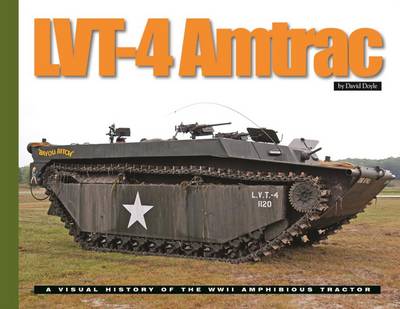For many, the quintessential image of World War II in the Pacific is represented by images of amphibious tractors, or Amtracs, churning toward volcanic islands. These tractors were the result of the genius and perseverance of Donald Roebling. Roebling was descended from a family of engineers and bridge-builders. His great-grandfather, John Roebling connected Manhattan and Brooklyn, which was completed by Donald's grandfather, Washington Roebling. Donald's creation however would span thousands of miles in the Pacific. With a great spirit of patriotism, Roebling granted a royalty-free license to his patents to the government, who contracted with FMC (Food Machinery Corporation) to build improved vehicles known as the LVT-2. This series of amphibious tracked vehicles (Amtracs) were developed from the original tracked amphibious vehicles built by Donald Roebling, known as the LVT-1 or Alligator. Several documents from the earliest days of the LVT-4 project referred to the vehicle as a "Modified LVT-2 with Stern Ramp", before the official designation of Landing Vehicle Tracked Model 4 was assigned. Ultimately, companies such as FMC, Borg-Warner, Graham-Paige and St. Louis Car Company would produce thousands of these Roebling-designed Alligators in a variety of styles. Descendants of these vehicles continue to see service today around the world. This Visual History title showcases the LVT-4 with historical photographs and detailed coverage of one of the world's finest surviving examples. Every detail of the wartime LVT-4 is revealed in over 250 crystal clear photos, the majority in full color. For anyone building the two AFV Club scale model kits, this is an absolutely required reference.
- ISBN10 194436711X
- ISBN13 9781944367114
- Publish Date 31 May 2017
- Publish Status Cancelled
- Publish Country US
- Imprint Ampersand Publishing Company, Incorporated
- Format Paperback
- Pages 120
- Language English
